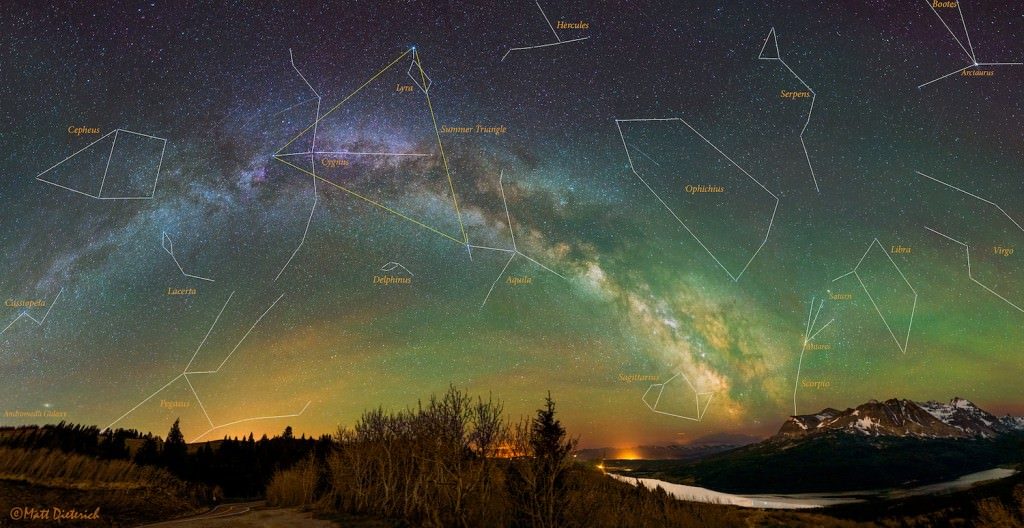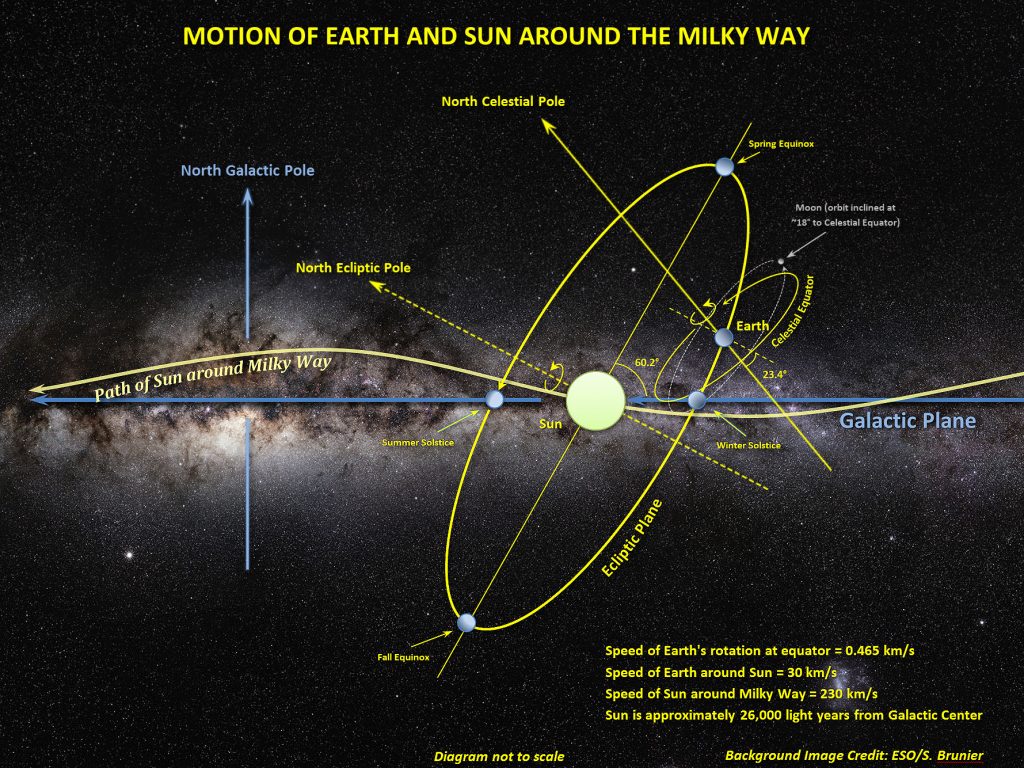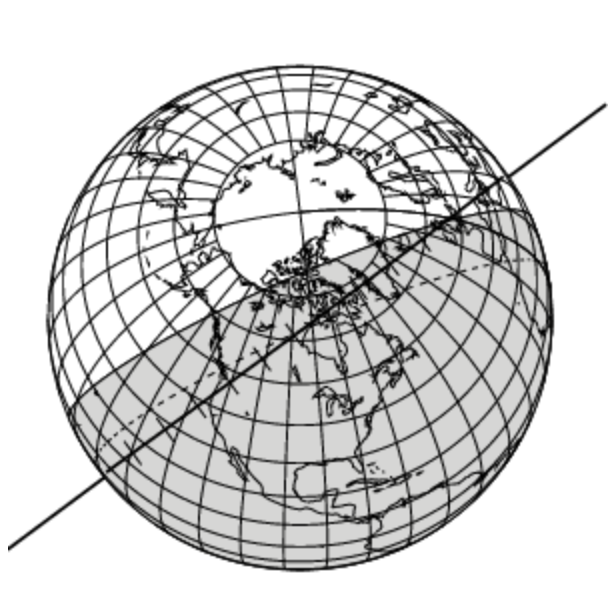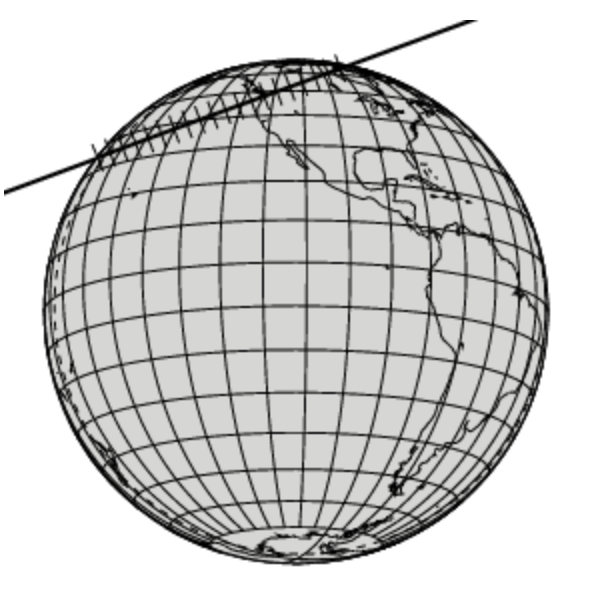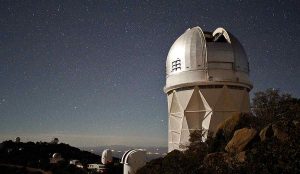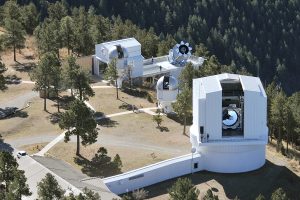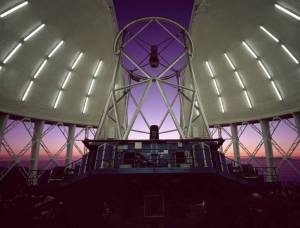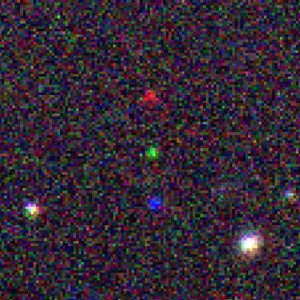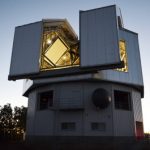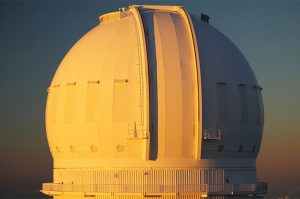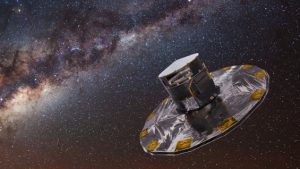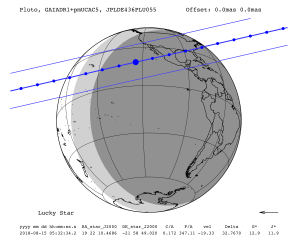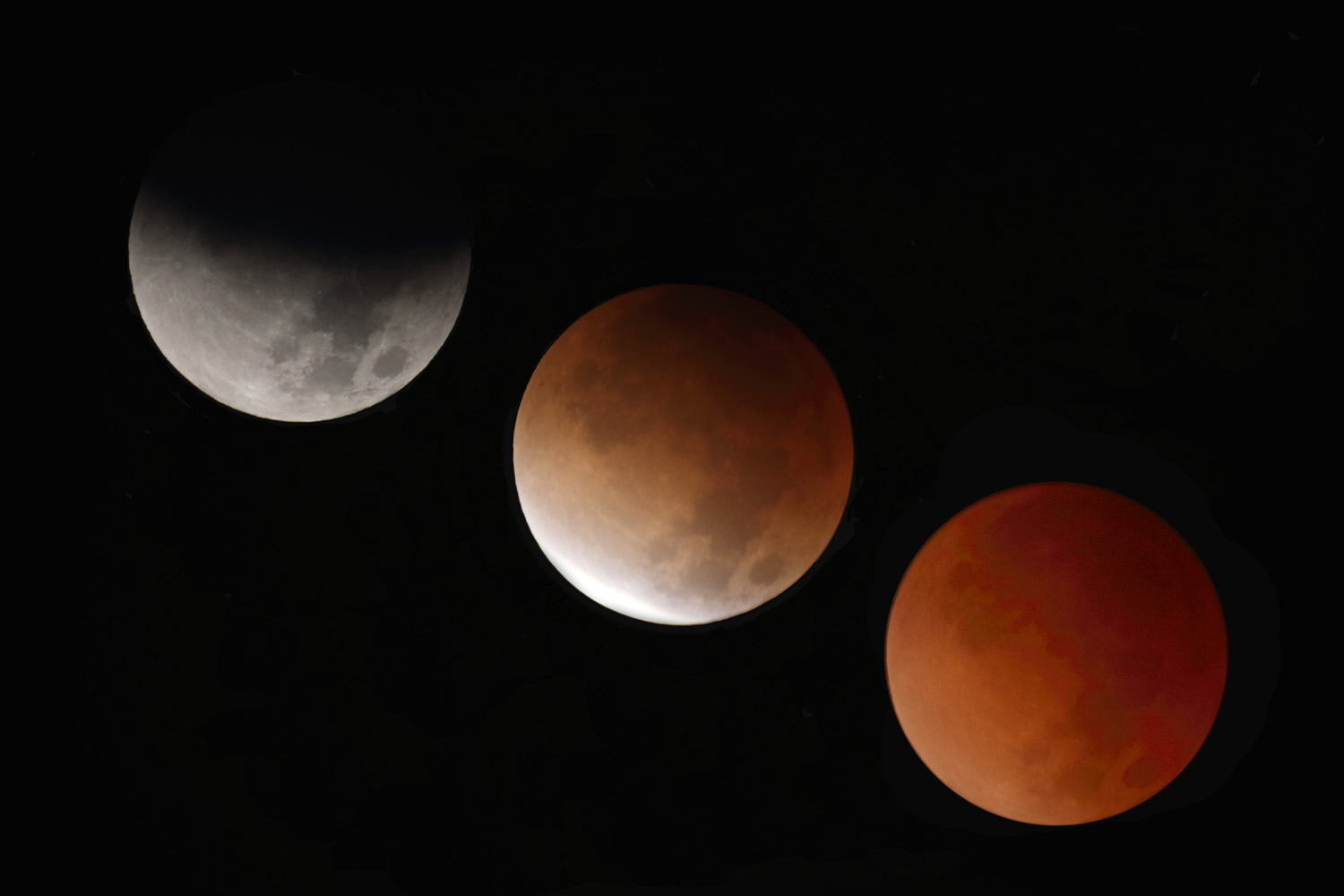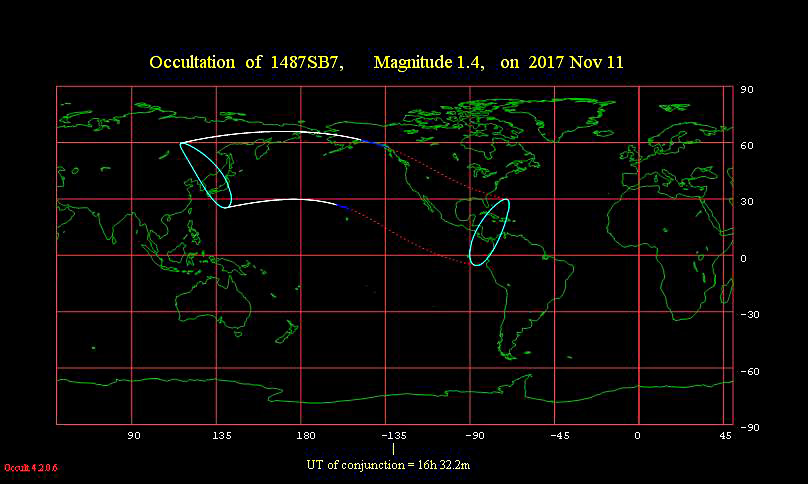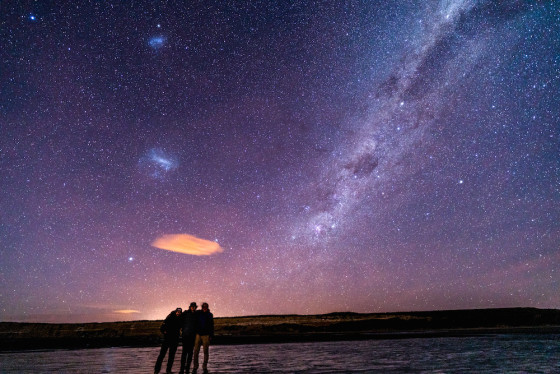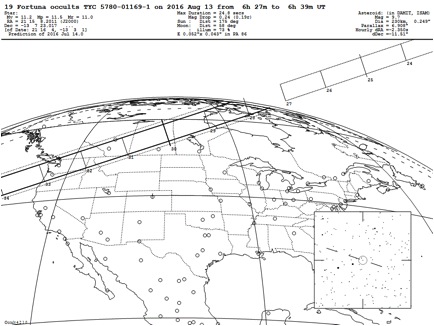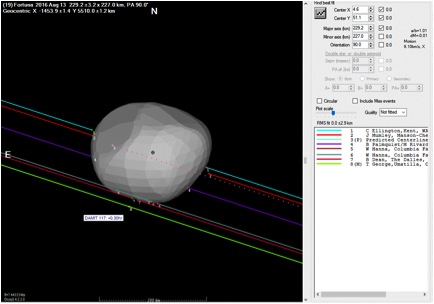The last positive occultation captured in North America in 2015 was the occultation of the star 2UCAC 39956822 by the asteroid (96) Aegle. Overall, there were 8 observers who observed the event. There were 7 positive observations and one miss observation. Three of the positives were recorded by RECON team members, Chris Patrick, Steve Bock, and Tony George. This blog will document the data contributed by the RECON members.
Here is the path map for the event. You can see the path crosses through central Arizona and southern Nevada, where three RECON members are located. Other observers in Arizona and central California were also able to observe the event.

Light Curve Analysis
All videos were uploaded via DropBox to an IOTA repository. DropBox is a tool used by IOTA for capturing and exchanging video files. Each of the video files were then analyzed by Tony George using Limovie. Limovie is a tool for commonly used by IOTA for video light curve analysis. Here are the three light curves that were captured by RECON members:
Chris Patrick

Steve Bock

Tony George

These three light curves have some interesting characteristics that should be noted.
The Chris Patrick light curve is very erratic and during the event, a very flat and uniform bottom. These are characteristics of the camera settings, which did not match the standard RECON guidelines. Whenever observing asteroidal occultations, RECON guidelines should be used for camera settings unless otherwise directed by the campaign organizer.
The Steve Bock light curve looks very ‘skimpy’. Again, this is the result of camera settings, most significantly, the degree of sense-up that was set. Steve used a sense-up of 64x. This integrates 32 frames which means that each block of 32 video frames looks essentially the same. Integration also cuts down on the amount of variation between individual frames and blocks of integrated frames. A sense-up of 64x is a common RECON guideline for TNO occultation observations, however it may be too much integration for use in brighter asteroid occultations.
When compared to Tony George’s light curve, you can see the degree to which a high sense-up can affect the look of the light curve. Tony used a sense-up of 2x. This integrates two video fields into one frame, so there are 30 frames per second that are all independent of adjacent frames.
While Tony’s light curve might not look good, it actually is the best of the three light curves for determining the correct D (disappearance) and R (reappearance) times from the video. That is because integration (sense-up) averages the video data and the D or R might occur somewhere within the integration block and the actual time must be estimated from the brightness value of the block of frames. With Tony’s video, the times can be derived to times less than 1-frame accuracy.
Occultation Disappearance and Reapperance Analysis
Once each video file was analyzed in Limovie, a data file is created in a comma separated variable format (csv). That csv file can be analyzed by different software applications to search for hard-to-find occultations, however this occultation was easy to see. The software programs can also be used on easy-to-see occultations, particularly those with video integration, so that more accurate estimates of the D and R times can be derived. Tony George used the program R-OTE (R-code Occultation Timing Extractor) to analyze all three light curves. The D and R times were determined and provided to the observers so they could send in their reports on a standard Excel spreadsheet provided by IOTA. For those that have OccultWatcher on their computers, the Excel form is easily available through a reporting app in OccultWatcher.
Asteroid Profile Analysis
Once the various observation D and R times are sent to IOTA for analysis, a powerful program called Occult4 is used to combine the times and geographic coordinates to determine the size and shape of the asteroid. For each observer, a chord across the earth is developed indicating where and when the star was visible. Where the star disappears, there is a gap in the chord equivalent to the length of time of the disappearance. When multiple chords are combined, the gaps in the chords trace out the size and shape of the asteroid. Here is the profile developed for the (96) Aegle event:
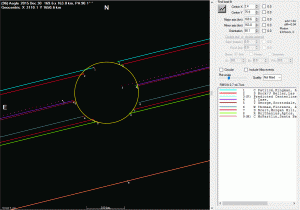
Note: Click on the above image to get a high-resolution view of the plot
The chords of observations by the various observers are shown in different colors. The chords of the three RECON observers are Chord 1: Chris Patrick; Chord 2: Steve Bock; and, Chord 5: Tony George. You can see from this plot the rough outline of the size and shape of the asteroid. Superimposed on the plot of the chords is the ellipse of best fit to the openings in the chords. The size of the asteroid as determined by this analysis is and ellipse with major axis of 169.6 km and minor axis of 163.0 km. This is one of the best observations ever obtained of the asteroid (96) Aegle. While this is only one snapshot of the asteroid on the date of the observation, future observations can determine the size and shape from other perspectives and hence the volume and density of the asteroid can also be determined from amateur astronomer observations. This type of data is very helpful to astronomers and space scientists as they continue to characterize the main belt asteroids and try and made decisions on asteroids to visit on future space flights.
RECON Observations Were Critical to Getting Size and Shape of (96) Aegle
The determination of the size and shape of an asteroid by occultations requires a good spread of observers across the path. In the case of the (96) Aegle event, the two Chords collected by RECON members Chris Patrick and Steve Bock were critical in setting the northern limb of the asteroid. Without those two chords, the true size and shape of (96) Aegle could not be determined from the other chords. This shows that occultation astronomy is a team sport. It takes a variety of observations to get the size and shape of an asteroid.
Opportunity to Participate in Future Main Belt Asteroid Events
While not a focus of the RECON project, RECON members can participate in the observation of main belt asteroids to sharpen their skill in doing occultations. The probability of getting a positive with a main belt asteroid event is higher for those within the path, since the orbits of main belt asteroids are better known than TNO’s. In the future, Tony George will be sending out alerts for main belt asteroid occultations predicted to cross the observing sites of RECON members. Typically, for a large main belt asteroid, the path may go over 3 or 4 RECON observers in the network. Watch for postings of favorable main belt asteroid events on the tnorecon email list. With luck, we will see your groups chord on a future profile plot.
